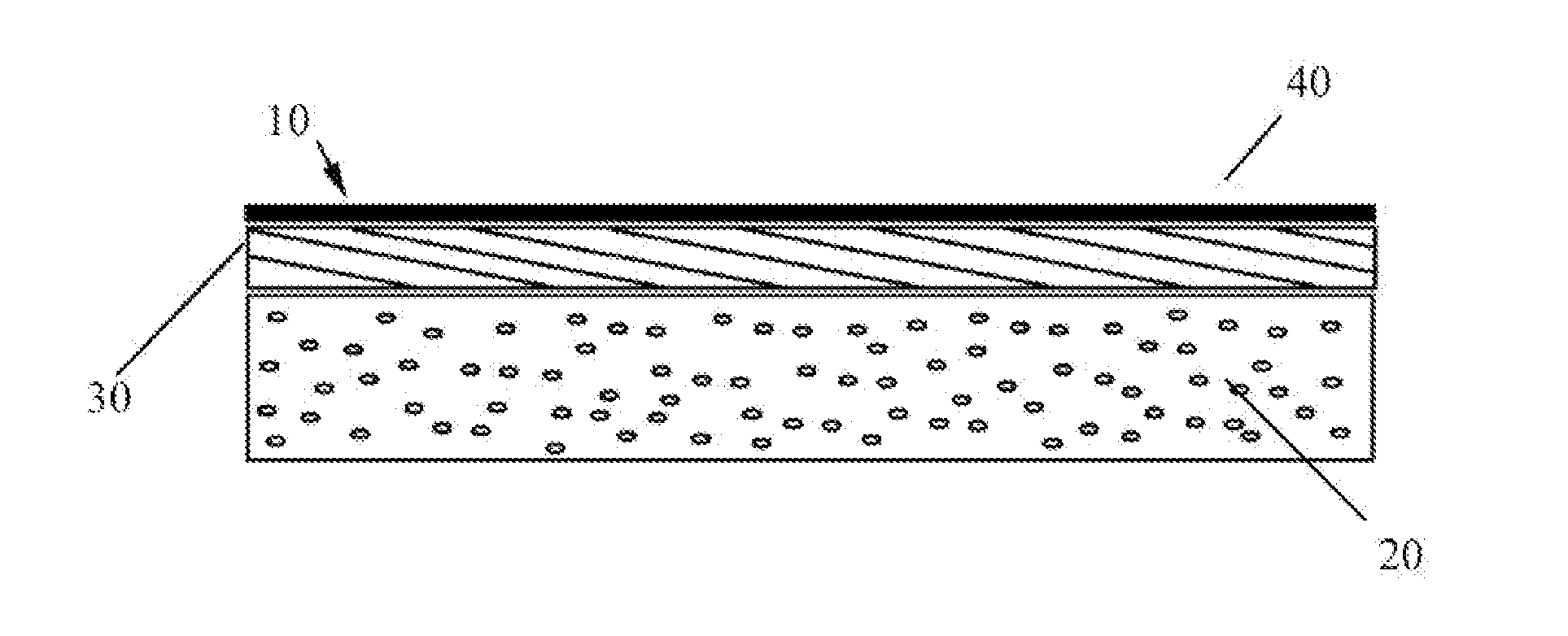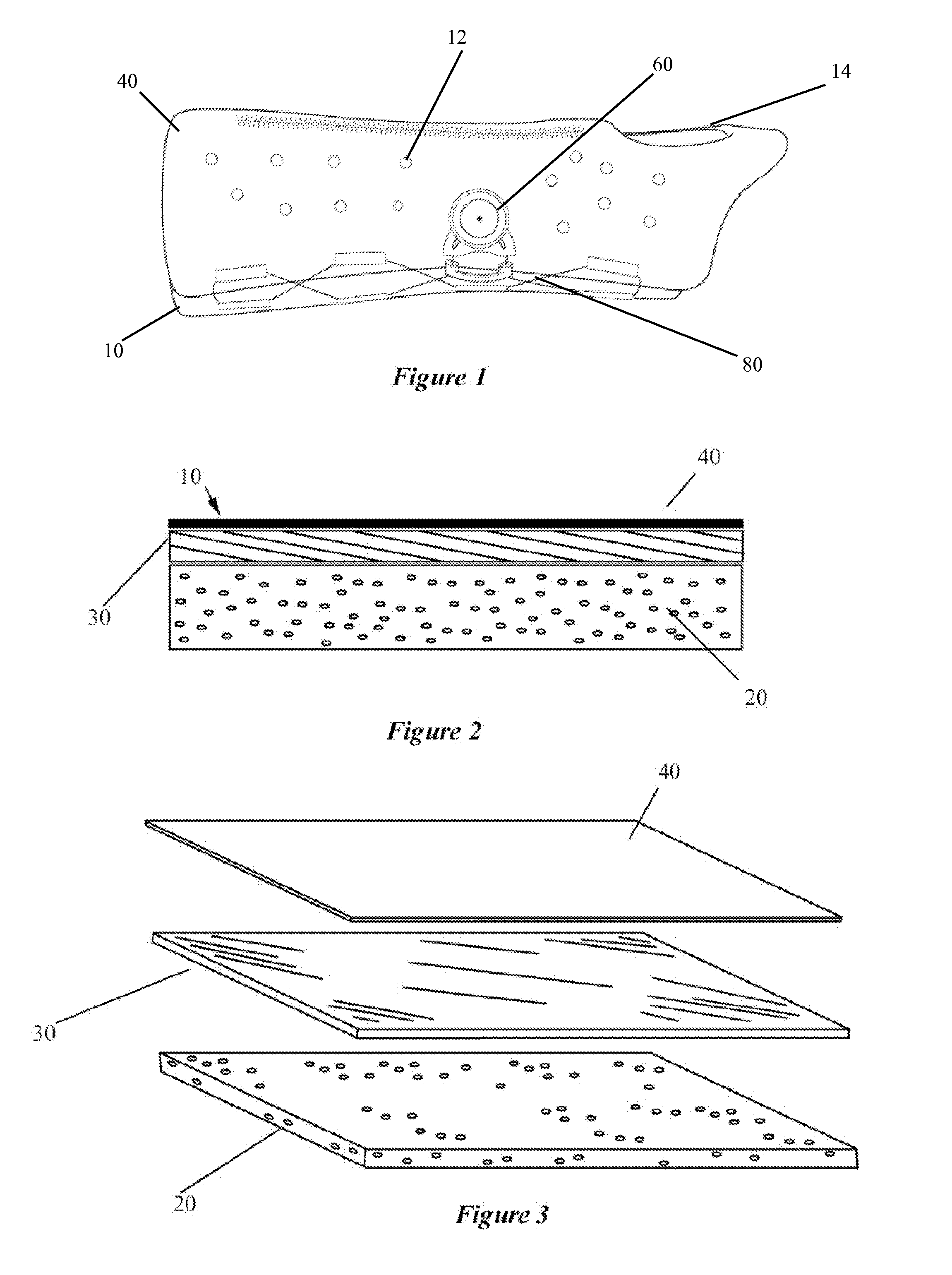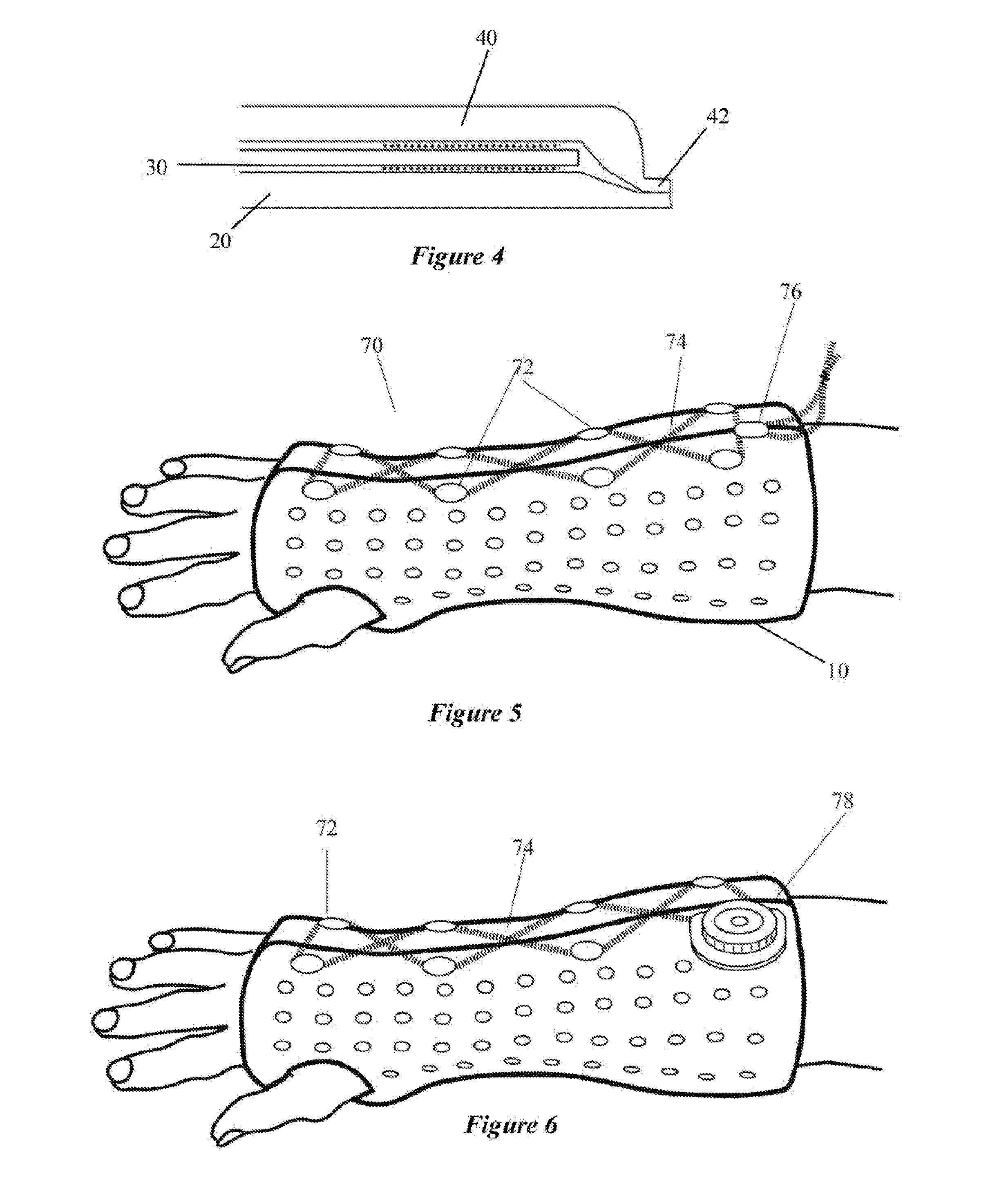Composite material for custom fitted products
a technology of composite materials and custom fitting, applied in the field of custom fitting products, can solve the problems of difficulty in custom fitting and fitting to a particular user, compliance problems, and inability to fit comfortably, and achieve the effect of easy custom fitting, high rigidity and strong
- Summary
- Abstract
- Description
- Claims
- Application Information
AI Technical Summary
Benefits of technology
Problems solved by technology
Method used
Image
Examples
Embodiment Construction
[0094]A preferred embodiment of the present invention is illustrated in FIGS. 1-74. It is to be expressly understood that the descriptive embodiments are provided herein for explanatory purposes only and are not meant to unduly limit the claimed inventions. The exemplary embodiments describe the present inventions in terms of orthopedic products used for immobilizing and supporting body parts. It is to be understood that the present invention is intended for use with other types of products, including without limitation medical, sports, protective gear, veterinary and other types of uses.
[0095]The following terms are defined herein as follows. A brace is a device used to assist or restrict body movement. A cast is a protective shell of material molded to protect a broken bone or fractured limb as it heals. A splint is a medical device for immobilizing or stabilizing an injured bone, joint, limb, or spine. An orthoses is an external orthopedic appliance used to support, assist, align...
PUM
| Property | Measurement | Unit |
|---|---|---|
| formable temperature | aaaaa | aaaaa |
| flexural modulus | aaaaa | aaaaa |
| elongation at break | aaaaa | aaaaa |
Abstract
Description
Claims
Application Information
 Login to View More
Login to View More - R&D
- Intellectual Property
- Life Sciences
- Materials
- Tech Scout
- Unparalleled Data Quality
- Higher Quality Content
- 60% Fewer Hallucinations
Browse by: Latest US Patents, China's latest patents, Technical Efficacy Thesaurus, Application Domain, Technology Topic, Popular Technical Reports.
© 2025 PatSnap. All rights reserved.Legal|Privacy policy|Modern Slavery Act Transparency Statement|Sitemap|About US| Contact US: help@patsnap.com



